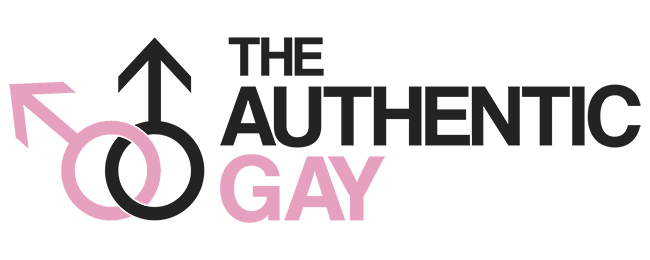What Does Ceterosexual Mean? Your Guide to Being a Better Ally

Ceterosexuality is an emerging term that describes someone’s attraction to transgender and non-binary people, similar to skoliosexuality but avoiding the fetishization of non-binary people.
Like all things, labels can be deceiving; even someone identifying as ceterosexual may possess attractions that fit under other categories, such as bisexuality or pansexuality. But you’ve come to the right place; we’ll clear up the differences and help you understand what ceterosexual means in this all-telling guide.
What Is Ceterosexuality?
Individuals identifying as heterosexual are attracted to members of the opposite sex or gender. Heterosexuals may also be known as straight or straight-identified people. Those drawn to both men and women are known as bisexuals or omnisexuals; someone attracted to both cis and transgender people (skoliosexual) is called ceterosexual. This term was created to avoid the negative connotations associated with using “skoliosexual,” which implies that cis people seek sexual relations with trans or non-binary people for sexual purposes.
Sexual orientation and romantic attraction are distinct concepts. Sexual orientation refers to who someone finds attractive, while romantic attraction focuses on individuals’ energy, vibes, and personalities. LGBTQ+ people sometimes use terms like skoliosexual, skolioromantic, or skiloromantic to describe their attraction to cis men or cis women. However, such labels can potentially focus on fetishizing transgender or non-binary people instead of romantic attraction.
Heterosexuals are attracted to both women and cis men, yet they do not define themselves as gay or lesbian. This is because sexuality and gender identity are social constructs; hence, their definition changes according to the individual.
Some individuals self-identify as demisexual, meaning they only experience sexual attraction after forming relationships or emotional connections with someone. A fluid individual’s sexual orientation may change over time and can be described using terms like pansexual, autosexual, and neosexual.
Heterosexual privilege refers to the advantages and benefits individuals receive from being heterosexual in a heteronormative society. Unfortunately, heterosexuality can become oppressive when associated with homophobia—fear and hatred towards same-sex love that is considered unnatural or disordered.
Internalized homophobia can lead to depression, anxiety, and even suicide for some individuals. Other forms of prejudice associated with heterosexuality, like racism and xenophobia, can also harm LGBTQ+ individuals’ mental health. Such bias often stems from childhood experiences with family and peers that reinforce heterosexuality as natural. As a result, we must challenge such heterosexist oppression if we want a more inclusive world.
What Is Ceterosexuality Attraction?
It can be challenging for members of the LGBTQ+ community to keep up with the ever-evolving language used to describe various experiences and feelings, which sometimes makes communication between members challenging. One such term that has emerged to describe a type of attraction within this community is ceterosexual; some find this less problematic than alternatives like enbysexual or allotroposexual.
No matter which labels you choose, it is crucial to respect a person’s right to self-identify and feel comfortable in their body. Furthermore, it’s worth remembering that sexual orientation means different things to different LGBTQ+ folks: some may only desire an attraction to members of their own gender, while others have little desire for romantic relationships. Some individuals may even add additional words, like demi-homomantic, when discussing their preferences.
People may find the term skoliosexual offensive due to its roots in Greek; its word skolios, meaning crooked or bent, reminds one of the medical condition scoliosis, where the spine may curve sideways, prompting some people on Tumblr to claim skoliosexual is an offensive term and preferring allotroposexual or enbysexual instead as terms for these individuals.
Ceterosexual people tend to be more accepting of nonbinary individuals than skoliosexual people. “Cetero” refers to “other, the rest,” so they’re attracted to anyone whose gender doesn’t fall neatly within the male/female binary, such as transgender people, genderqueer people, or those who identify with both identities simultaneously.
Other terms used to describe similar experiences include heteroflexible, heteroromantic, and homoflexible. These phrases refer to people who can feel attracted to both genders in some capacity but can fluctuate their attraction depending on mood or preferences; some of these people may also find attraction to nonbinary individuals, though not always.
What Is Ceterosexuality Symbolism?
Many nonbinary individuals prefer ceterosexual as an acceptable and less controversial alternative to skoliosexual, which they perceive to have negative connotations. Skoliosexual assumes you can identify someone’s gender identity without knowing their pronouns, making some trans and nonbinary people feel fetishized or dehumanized.
Skoliosexualism implies that one can only be attracted to trans and nonbinary people of similar gender, posing a dilemma for many people who identify with bisexuality; it presumes they will only find people who share their cisgender sexual orientation attractive. While it is true that cisgender people can find nonbinary and trans people attractive, it is essential to remember that not all nonbinary and trans people possess your gender.
Another problem associated with the term skoliosexual is its potential to promote heteronormativity, that is, the assumption that only masculine men and feminine women are sexually desirable, which makes accepting queer identities harder while leading to internalized homophobia, a form of discrimination felt by members of LGBTQIA+ communities.
Ceterosexual is a relatively new term that could help address some of the challenges skoliosexuals face; however, its usage remains limited and may not yet have widespread acceptance.
The history of nonbinary and transgender individuals goes farther back than many people think; those unfamiliar with it should take an in-depth look at its roots and development. While not yet widely accepted, “nonbinary and transgender” can serve as a promising alternative term. Regardless of what name we choose for ourselves, all people must be accepted without exception and learn about the broad spectrum of sexualities and gender identities present within society.
What is the Ceterosexuality Pride Flag?
Pride flags represent most gender identities and sexual orientations within the queer community, yet some identities, such as ceterosexuality, remain underrepresented despite having their own flag. It would be remiss of us not to represent ceterosexuality by doing so! Ceterosexuality should be acknowledged and celebrated.
Ceterosexual people generally show attraction toward nonbinary and transgender people. The term cetero is short for “et cetera,” Latin for “and so forth,” providing a more inclusive term than its predecessor, “skoliosexual,” used by some members of the LGBTQ+ community to refer to their attraction towards nonbinary and transgender people but not women or men.
Though there’s no physical way of telling whether someone is ceterosexual, you can find out by inquiring about their sexual and gender preferences. Unfortunately, this topic can often be socially awkward when talking to those attracted to nonbinary and transgender individuals, as hearing that their preferences aren’t welcome can cause significant distress.
Be a great ally by being open-minded and respectful towards all. To better understand the LGBTQ+ community, there is plenty of information online and through organizations; additionally, there may be LGBTQ+ groups in your local area where you can meet people with similar interests.
When communicating with nonbinary and transgender individuals, you must use their preferred pronouns and respect their right to choose their pronouns. Furthermore, it would be best to refrain from using language that could be perceived as offensive, such as sexist or ableist language.
Another effective way of showing support is by flying the Ceterosexuality Pride Flag. This variation on the bisexual flag features pink and royal blue with an overlapping purple stripe and represents the attraction between same-sex people, opposite-sex people, all genders, or all three; its colors were explicitly chosen to represent diversity within the LGBTQ+ community.
